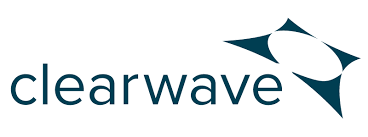- Industry News
- Law & Malpractice
- Coding & Documentation
- Practice Management
- Finance
- Technology
- Patient Engagement & Communications
- Billing & Collections
- Staffing & Salary
Patient Self-Scheduling: 5 Ways to Get Your Providers On Board

Mike Blog on Self-Scheduling Tactics
I recently shared top insights from the 2023 Patient & Consumer Innovation Summit, held by KLAS Research, in this recent article on, “Patient Self-Scheduling is a Huge Opportunity in 2024”.
The article covers what healthcare leaders must know about today’s self-scheduling landscape; patients demand it, providers are hesitant, and practices need to respond.
Ultimately, patients are angry around self-scheduling, it’s no longer just a trend or a nice-to-have ...
If you have a chance, read through the article to review the common misconceptions providers and their practices have around self-scheduling. In this article however, I am to share the action steps that high-growth practices are already taking to provide self-scheduling to patients in a way that meets provider demands. You may find value in these steps as you consider self-scheduling for your practice.
Follow these 5 steps, and see how you too can improve scheduling accuracy, reduce staff intervention and most importantly, meet physician and patient demands.
1. Match Provider Workflow Requirements
At the KLAS Research summit, we discussed the common barriers to implementing self-scheduling. The resounding concern was; an online tool isn’t robust enough to meet our scheduling needs.
That is a valid concern we hear from healthcare practices. It is a common misconception that there is no solution powerful enough. Our extensive experience has allowed us to successfully assist numerous practices in overcoming them. This is precisely why we developed Clearwave Scheduling to be the most robust tool in the market, designed to tackle the common obstacles that practices often face when implementing online scheduling.
One director of operations at a practice we’ve worked with shared their providers’ genuine hesitancy around self-scheduling, “Our providers had lots of questions initially around how well an online scheduler would be able to accurately book patients. We didn’t want patients with ankle injuries to get booked with the spine specialty physician. We also needed to know if patients were injured in an accident or had a lawyer.”
Our extensive experience working with practices of all sizes and specialties has shown that complexity is a solvable challenge with strategic self-scheduling workflows and manual staff intervention in the booking process, doesn’t always mean accuracy. Here’s what we see ...
Complex is possible and it doesn’t have to fall solely on your shoulders.
Smart patient self-scheduling solutions recognize that one size does not fit all. Moving a scheduling process from manual to digital does not—and should not—fall solely on your shoulders. A vendor with years of experience working with practices of all sizes and specialties will help you build the scheduling workflows you need, ones that meet even the most convoluted requirements.
Regardless of the number of physicians or unique practice specifications, there are scheduling systems that can be tailored to meet the diverse requirements of healthcare practices and physicians. In our work with practices of all sizes, we’ve helped them implement a self-scheduling approach that maximizes scheduling accuracy, drops training time and reduces FTE involvement in booking management.
Online scheduling has helped one practice increase patient acquisition every month — with no complaints from their 26 on-staff providers. Their director of operations shares, “The online scheduler has been huge in helping book patients in the way that meets provider requirements, and now it is really on autopilot for us. It has been so seamless and improved our scheduling efficiency.”
Manual, Doesn’t Mean Accurate.
Accuracy is not just possible, but increasingly achievable with online patient self-scheduling platforms.
How many errors has your schedule has incurred this year, despite having a manual approach? Patient self-scheduling software can build efficiency into your scheduling approach, while removing the risk of human error. A digital scheduling solution's primary benefit stems from its capability to rigorously follow pre-determined workflow specifications, eradicating any chance of inaccuracies in patient reservations.
That same director of operations we worked with shared why digital is more reliable than traditional methods, “When patients book online, we know it will be accurate, which isn’t something you can always guarantee in an over-the-phone interaction."
2. Verify Eligibility
As eligibility is another complexity to patient bookings, it’s often a top reason practices and providers feel they must have staff intervene in the process. Insight from KLAS Research shares the various opinions of practice leaders on where self-scheduling solutions can often fall short, naming eligibility as a top missing piece. Eligibility checks reduce errors and ensure that patients are directed to the right services based on their insurance coverage and specific healthcare needs.
Spoiler — this challenge can be immediately resolved with automated eligibility checks at the point-of-scheduling.
A scheduling solution that checks patient eligibility during the appointment booking process can help your practice meet scheduling requirements, especially around the unique Medicare/Medicaid and self-pay rules that you’ve established. One practice we worked with uses their digital scheduling workflow to help them meet similar patient insurance rules. Their director of operations shared, “We were able to add a pop-up consent in our scheduling workflows. Now, when someone indicates that they’re uninsured, we can have patients review and acknowledge our financial policies via the online scheduler.”
3. Track Success
Through our years of experience helping practices implement self-scheduling, we understand that success is not just about the number of appointments scheduled, but also understanding the entire patient journey.
The goal of an online self-scheduling tool is to help patients conveniently book appointments, much like they would book air travel. Yet, if 100 patients try to schedule an appointment but only 20 actually make it through the entire process, then your practice is missing the mark at providing easy booking options to your patients. If you have no way to see how many patients make it through your scheduling workflow, you will have no way to track how well it's helping patients conveniently book appointments.
Do patients drop off on question six most often, if so why and how can you adjust? Do patients avoid filling out certain forms or stop short at certain questions?
This detailed tracking will help you understand how to tweak your process to ensure more patients complete their booking online. A comprehensive self-scheduling platform should provide analytics on how many patients complete the scheduling process, the percentage of new versus existing patient bookings and insight into when bookings occur (last minute, after hours, etc.,.) This data is invaluable for refining the scheduling process and getting more patients to use the platform.
4. Design with Patients in Mind
It’s simple, patients want ease, convenience and confirmation.
Ease: A user-friendly interface is paramount. Patients should be able to navigate the platform effortlessly, eliminating unnecessary questions and reducing the time it takes to book an appointment. By minimizing clicks and offering clear instructions, healthcare practices can make booking feel effortless for patients, while meeting practice workflow requirements.
Convenience: Have you ever calculated your call abandonment rate to see how many patients you’re losing by not offering online booking? Patients want to make appointments while they’re top-of-mind, which means anywhere, anytime, 24/7.
Confirmation: There’s a clear difference between requesting an appointment and actually confirming an appointment. When patients go to book, they don’t want to wait and see if their appointment request is approved. The confirmation element is often a missing piece in self-scheduling solutions that can lead to angry patients.
5. Make it Accessible
Patients want self-scheduling, but if the ‘book now’ option is difficult to find on your website or long-standing patients aren’t aware you now offer self-scheduling, how will they know you offer this convenience?
To improve scheduling accuracy and meet patient expectations, send out a bat signal (get the word out!) Build on the excitement! Here are a few tips:
Promote on your website: Add a prominent "Schedule Now" button to your website in a bright, brand color. Make sure this button remains visible on-screen even during scrolling, so that it is present no matter where each visitor is on the page.
Leverage social media: Use Facebook, Twitter and Instagram to spread the word about your patient self-scheduling system.
Educate your staff: Train your staff members on how best to promote and explain the benefits of self-scheduling to patients during their interactions.
Use resources provided by your vendor: Take advantage of the free marketing templates at your disposal. We recognize how crucial it is to build patient adoption of self-scheduling and provide our customers with resources and templates they can use as a jumping-off point.
It’s Time. Work Smarter, Not Harder with Patient Self-Scheduling.
The days of waiting on hold and booking over the phone are becoming obsolete. High-growth practices are acting fast to meet evolving patient requirements.
At Clearwave, we stand ready to guide healthcare practices through the intricacies of successful self-scheduling implementation. By embracing flexibility, eligibility verification, robust analytics, patient-centric design and strategic promotional efforts, practices can not only keep pace with industry trends but lead the way to seeing more patients than ever before.
Sponsored by

